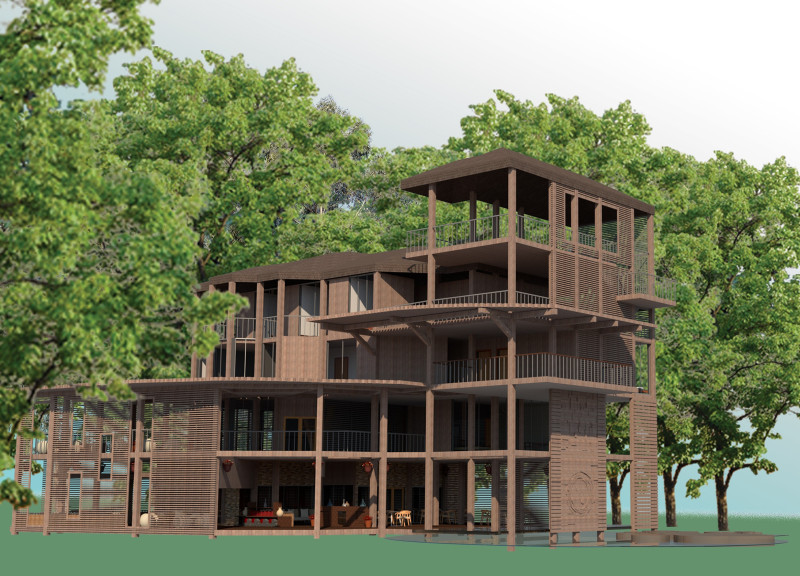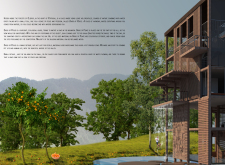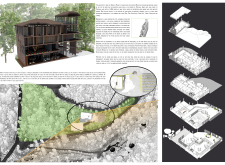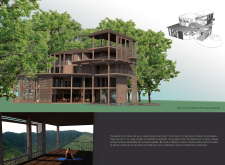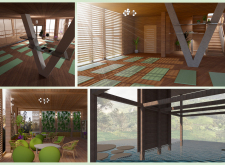5 key facts about this project
The design features a combination of reclaimed and sustainably sourced materials, enhancing its eco-friendly approach. Notable materials used include sustainable wood, large glass panels for natural light, and concrete for structural integrity. This careful selection of materials not only supports environmental efforts but also contributes to the overall aesthetic and functionality of the space.
Integration with Nature and Landscape
The relationship between the building and its landscape is a key focus of the design. Positioned atop a hill, the structure capitalizes on views while utilizing the topography for passive solar heating. This orientation facilitates energy efficiency and underscores a commitment to sustainability. Large glass windows optimize natural light and create a seamless transition between indoor and outdoor environments, enhancing the residents’ connection to the landscape.
A distinctive feature of "Oasis of Peace" is its flexible living spaces. The interior layout allows for adjustable configurations through movable partitions, enabling users to customize their environment according to their needs. This adaptability supports both intimate gatherings and larger functions, reflecting the versatility of contemporary living.
Unique Aspects of the Design
The project incorporates elements designed to enhance the sensory experience of its users. Water features are thoughtfully integrated, serving both aesthetic and therapeutic roles. These water elements contribute to a calming atmosphere, reinforcing the goals of the design.
Another unique aspect of the "Oasis of Peace" is the attention to vertical design. Public and private areas are strategically distributed across different levels. Common areas, positioned on lower levels, promote social interaction, while upper levels are reserved for private retreats. This verticality not only optimizes the use of space but also creates a metaphorical journey towards personal wellness and mindfulness.
The project also includes local craftsmanship and artistic installations that reflect the cultural heritage of the region, connecting residents to the local context. This thoughtful inclusion enhances the building's sense of place and identity.
For a thorough understanding of the project's architectural concepts, readers are encouraged to explore the architectural plans, architectural sections, architectural designs, and architectural ideas presented as part of "Oasis of Peace." This investigation will provide deeper insights into the innovative approaches utilized in this residential architecture project.


